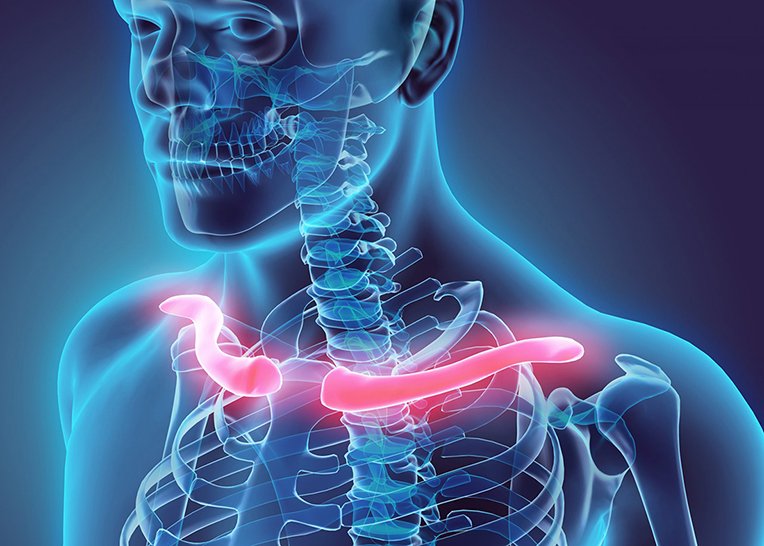Collarbone (Clavicle) fractures make up 44% to 66% of all fractures of shoulder. A doctor can often diagnose a clavicle fracture during a physical evaluation, but X-rays and other tests are often recommended. The fracture may also require surgical intervention when Orthopaedic or trauma Implant may be used to fix the fracture.
Diagnosing Collarbone Fractures
X-rays can help determine the extent and location of the injury. At times it is essential to distinguish between a clavicle fracture and an injury to the joint at the top of the shoulder, called the acromioclavicular joint. A CT scan may also be required for more detailed images.
During the physical examination, the physician may do the following tasks:
- Note areas of tenderness
- Observe skin discoloration
- Look for deformities
- Address any open wounds
- Palpate or touch the shoulder blade and ribs to determine if there is an accompanying injury
- Listen to the lungs with a stethoscope, and observe differences in breathing
- Evaluate the shoulder’s range of motion
A doctor may conduct a neurological examination to make sure that motor functions and sensation are normal. The clavicle is located near a series of nerves found based in the shoulder and neck called the brachial plexus. Injury to the brachial plexus is uncommon but can happen with a clavicle break.
The physician will also ask about the medical history of patient, how the injury occurred, and any symptoms associated with it.
Common Causes and Risk Factors of Collarbone Breaks
They may be caused by:
- An athletic event resulting in a fall or direct hit. Clavicle fractures related to sports are commonly seen in children and young adults. Caution is advised when playing contact sports- including rugby, football, and hockey- and when participating in “extreme” sports where falls can happen- such as skateboarding and biking.
- A fall on the shoulder or an extended arm.
- A direct hit to the shoulder in a collision of motor vehicle.
Falling on the shoulder is the common cause of clavicle fractures.
Risk factors for clavicle breaks include:
- Young age, reaching a high point between the ages of 10 and 19. The clavicle is not entirely developed until about 20 years of age.
- Advanced age in both females and males over the age of 70.
- The onset of osteopenia, which is the early stage of reduced bone maps that can eventually lead to osteoporosis.
While certain people are at greater risk for a collarbone fracture, they can affect any person.
Nonsurgical Treatment for a Collarbone Fracture
Nonsurgical treatment for a broken clavicle can include the following:
- A wrap or arm sling is typically worn after the break occurs. This helps to prevent arm movement as the collarbone recovers.
- Pain medication, typically nonsteroidal anti-inti-inflammatory drugs such as ibuprofen or naproxen, can be taken to reduce pain.
- Physical therapy exercises will be recommended once the collarbone starts to mend. The patient will start with mild movements to ease stiffness. More intense exercises will be added after the recovery of bone.
Surgical Treatment for a Collarbone Fractures
Clavicle surgery may be required if the fractured pieces of bone are not in their anatomical and correct location. (The medical term for this is a displaced fracture). In these cases, the bones need to be secured and moved to heal properly. Bone plates, bone screws, and pins are often used during the surgical process. Rehabilitation after surgery includes exercises that can be done at home or with a physical therapist.








